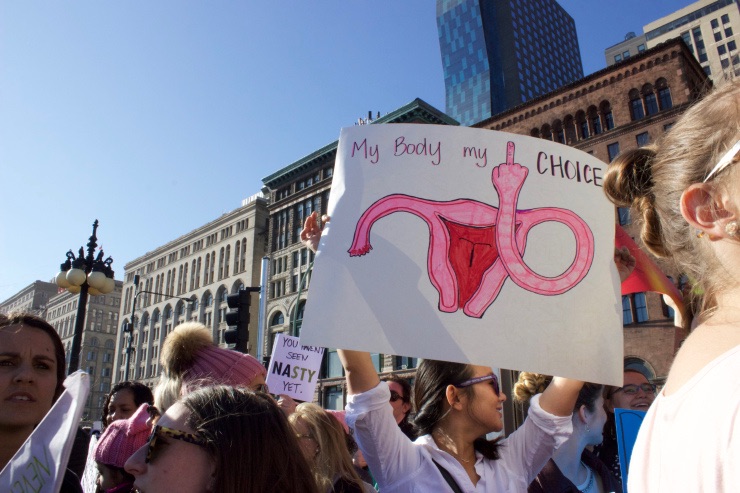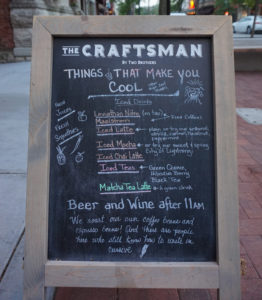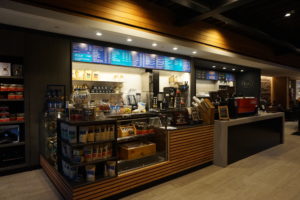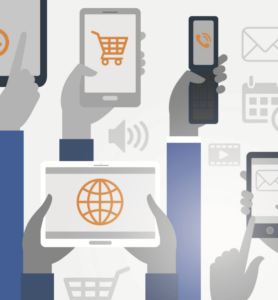“Millennials have surpassed Baby Boomers as the nation’s largest living generation,” according to Richard Fry from Pew Research Center, and it’s almost impossible not to notice the influence of millennials now in 2017. Millennials, people born between 1981-1997 according to Pew Research Center, have changed the social landscape in more ways than one and continued to fight for causes we’ve been hearing about since the recession.
Ford’s “Looking Further With Ford 2017 Trends” report points out several trends that millennials have a strong influence over, but there are four in particular that stand out as more millennial-driven than the rest: the “Female Frontier,” “Sustainability Blues,” The Good Life 2.0” and “The Tech Spiral.”
So let’s take a look into the millennial influence under these four microscopes and see if millennials are really as influential as they seem.
Female Frontier

The Women’s March on Chicago brings the fight for women’s rights to the Midwest / Photo by Emily Arias
Millennials have taken up several different causes as of late, most of them being politically driven. But none is as prevalent as the feminist movement. There’s been an overwhelming push for women’s rights, especially in the areas of equal pay and reproductive rights. In fact, 88 percent of women and 77 percent of men believe that women still aren’t equal to men said the Ford report.
But we’re getting closer to equality.
William Cummings with USA Today wrote that “The number of young women ages 25 to 34 in the workforce jumped more than 40% between 1975 and 2016,” and that “Those young women saw their median income rise from $23,000 to $29,000 in the same time period, although men’s remains $11,000 higher.” So this closing gap can be attributed to the rising earnings of women, said Pew Social Trends.
Seventy-five percent of men and 72 percent of women agree that “the roles of men and women are becoming more blurred,” said the Ford report. We’ve seen this blurring most notably within the job market, and the beginnings of it in the political sphere as well.

GRRL PWR / Photo by Emily Arias
One of the most notable fights for women’s rights was the Women’s March on Washington — and other places across the U.S. such as Chicago, San Francisco, etc. — on January 21, the day following President Trump’s inauguration. This, in a lot of people’s minds, was the beginning of the third wave of feminism. While there had been moments of women in Hollywood, in the workplace, etc. fighting for equal pay, the women’s march brought a larger audience to the movement.
Pew Social Trends reported that “Among Millennial women, 75% say this country needs to continue making changes to achieve gender equality in the workplace, compared with 57% of Millennial men.”
But as second-wave feminist Jennie Smith-Pariola points out, the feminist movement has been something that’s been at the forefront of American politics since the mid-1800s
Audio PlayerShe also said she thinks the election has helped to “catalyze and mobilize women who care.” Women have been a force within the political field as of late. With marches, protests and petitions, women are demanding that they be equal to men and have all their rights protected — this is all being threatened under the current administration.
One way that millennials can — and have been — fighting back is through politics at the local, state and national level. “The easiest way is to engage in meaningful discourse on social media,” said senior finance, economics, management and German major Ryan Schuring (’17).
But as Schuring warns, “It is crucial to understand the dynamic, though, as more involvement does not necessarily mean better activism. Blind following of a cause can be dangerous.” It’s important for voters to be informed on topics, especially one that’s as important and popular as the feminist movement.
Audio PlayerSustainability Blues
Usually people in older generations think of sustainable young people as hippies, and they can be, but caring about sustainability, especially in business, has become more widespread across the millennial generation.

The Craftsman welcomes in customers with a chalkboard sign / Photo by Halle Olson
One business striving for sustainability is right in our own backyard: The Craftsman by Two Brothers Brewing Co. This months-old cafe, restaurant and bar mix uses several sustainability practices in their restaurant like:
- Using recyclable materials as well as local ingredients whenever possible
- Providing brewery spent grain to farms for cattle
- Hosting no-waste events like our Summer Festival
These practices, and several others, aren’t limited to just The Craftsman, but are implemented in all four of their locations.
Under the “Craft with A Conscience” tab, the page reads “Two Brothers is craft with a conscience.” To have a tab on the homepage and so boldly state that they craft with a conscience shows that this is an important aspect of their business to customers, who happen to be mostly Generation X and millennials.
Audio Player“I think it’s a welcome change anywhere, knowing where everything comes from,” said general manager Matthew Mitroff.
Another part of The Craftsman that millennials love is the farm-to-table dining in the Modern Tavern, up on the second floor. Everything is locally sourced, when possible, from a 200-mile radius surrounding Naperville. This guarantees that food is fresh and “real,” something sustainability-loving millennials flock to. There’s not a Friday or Saturday night that one isn’t waiting to try a fresh salad or juicy burger from the Modern Tavern.

The Market Cafe / Photo by Halle Olson
While The Craftsman caters to more than just millennials — 15-60 years of age for the Market Cafe, 21-60 years of age for the Modern Tavern, and 21-70 years of age for the Third Floor — the approximately 50 percent millennial customer base appreciates the sustainability
and comes to The Craftsman for its sustainability practices said Mitroff.
This push toward sustainability throughout the country and the world has been driven by the water issues, whether it be sanitation or lack of the vital resource, and business are now trying to be more sustainable. According to the Ford report, “1.8 billion people around the world don’t have access to safe water — that’s nearly 25% of the world’s population.” The report also estimates that two-thirds of world’s population will face water shortages by 2025.
By sourcing product within 200 miles, when possible, The Craftsman is able to cut down on things like fuel cost and water use as well as promote local businesses who use sustainable practices. Just within a week, the “average American consume more than 300 gallons of California water… by eating food that was produced there,” said the Ford report. No wonder they’re always in a drought. By locally sourcing, resource usage is being spread more evenly across the country and can take the pressure off of states who are major producers of certain product.
The Good Life 2.0
It’s almost expected that college students study abroad these days, and many do. While this was something unattainable and unwanted by most Baby Boomers when they were in the midst of their college days, this is something that has become almost necessary for college students in the 21st century. According to the Ford report, 71 percent of adults globally agree that they “define prosperity differently than (their) parents do.”

Big Ben shining on a London night / Photo by Halle Olson
This can be seen by the steady increase in study abroad students each year. Study abroad adviser Whitney Ewing said “Generally we get more students enrolling in studying abroad, but it kind of dips down every other year.” But overall, there’s an increase in students studying abroad — the coming academic year will have over 100 undergraduate students making trips to places like England and China, the second highest amount in the history of the program said study abroad adviser Kimberley Larsson
The spike in study abroad comes with a change in values. As the Ford report states, 69 percent of women and 60 percent of men think “wealth is an outdated measure of success.”
Instead, people want experience, something that proves to be vital when entering the real world as a, most likely, independent person. People spend the first 22 years of their lives (almost) in school, most not knowing how to live or function on their own, so life after college can be a real shock. What study abroad offers is that real world experience — independence, maturity, the ability to deal with ambiguity, budget skills, how to navigate a world that’s unfamiliar to you, etc. — mixed in with a lot of travel to places most people could never even dream of going.
This experience is valued over the material possessions that can come with travel like souvenirs, clothing, etc. as Ewing points out, but there is still some financial concern from both parents and students about the literal cost of studying abroad.
But while this experience is great, students are using it more as a means of checking off another box that can help them when they’re trying to land that first post-college job and focusing on the next steps. One aspect that many students are most drawn to with study abroad is the opportunity for an international internship. That experience along can help you get a job.
Studying abroad also comes with many vital skills that can help land that entry-level job over another applicant and just help you grow as an independent person as well. For example, Larsson said knowing how to navigate a subway system may seem like a rather pointless skill, but actually shows you know how to get around using public transportation and will be just fine, a dying art in the age of Uber. A skill like that can also give you a sense of confidence said Larsson.
But some of the most important skills that come from study abroad are “being diplomatic and being more aware of your own country and being more educated about your own country by going abroad, as well as being more educated about the world around you, being sensitive to other cultures,” said Larsson. “These are huge things that are going to benefit you.”
Study abroad has almost become a beneficial form of vacation, something that our fast-moving world needs more of. The Ford report said “To escape the pressures of urban life and the stresses of constant connectivity, Millennials… are not turning to five-star hotels or Michelin Star restaurants. Instead, they’re using vacation to boost their well-being — from yoga retreats to boot camps to healthy cooking tours in Italy. Wellness travel is now a $563 billion global industry, after growing 14% in the last two years. More than 690 million wellness-focused trips were taken in 2015 worldwide.” By studying abroad, students are able to do some of these experiential activities that also contribute to their overall wellbeing.
The Tech Spiral
The final trend should come as no surprise to a majority of people. Ten years ago, Apple changed the mobile phone market forever with the release of the iPhone. Now, it’s hard to imagine life without smartphones. With constant connection to the people around us and everyone in the world, it’s hard to tear oneself away from their device.

Constantly connected / Graphic via Looking Further with Ford 2017 Trends report
I can speak from experience on this one. As an avid user of social media, specifically Instagram and Twitter, it’s impossible to tear myself away from the apps throughout the day and I get a thrill when I see someone has liked my photo or tweet. This is something that most people can agree with — there’s a sort of high that comes with being a social media user.
But how is this affecting the way we communicate face-to-face?
According to many Baby Boomers and X’ers, millennials can’t really carry on a conversation to save their life. They’re incapable of tearing themselves away from their phones, and then we end up with photos and memes of entire groups of people are staring at their phones while they’re at dinner, at a movie, walking their dog. The list is endless.
Dr. Emily Cramer, a communication professor at North Central College, brought up some theorists who focus on the effects of smartphones:
The Ford report states that 47 percent of adults globally agree that “technology is making us dumber,” while 63 percent of adults globally agree that smartphones are making us less polite. Then there’s the age-old comments on smartphones and their linkage to school performance.

Are we truly addicted to our devices? / Graphic by Ciara Papa
The report says “While smartphones have enabled kids to send Snapchat selfies, U.S. research shows screen time is likely to hurt their performance in school. Kids who spend two to four hours daily using digital devices outside of class are 23% more likely not to finish homework, compared with kids who spend less than two hours consuming digital media. As time spent with screens increases, so does the likelihood homework will be incomplete. Kids who spend four to six hours with their screens are 49% less likely to finish their assignments. As screen time reaches six to eight hours, that figure jumps to 63%.”
Cramer said that “we’re not used to sustained thinking. Instead we’ve become more used to and more adept at flitting around from topic to topic,” a concept referred to as “staccato thinking.”
Audio PlayerSelfies are probably the biggest thing on any social media platform right now — Snapchat, Instagram, Facebook, Twitter, you name it. A 2014 Pew Research Center survey found that 55 percent of millennials had shared a selfie, and Paul Taylor writes that “Nine-in-ten Millennials say people generally share too much information about themselves online, a view held by similarly lopsided proportions of all older generations.”
All of this connection is enticing and ultimately addicting. “It reduces our ability to be thoroughly present in the moment and to actually be alone with our thoughts,” Cramer said.
It’s hard to talk about today’s society without discussing millennials. They’re surely a force to be reckoned with in many aspects of social and political life. The “Female Frontier,” “Sustainability Blues,” The Good Life 2.0” and “The Tech Spiral” are just a few of the areas that millennials have influenced differently from the two previous generations.
Editor’s note: All video and audio recording and editing by Halle Olson.

